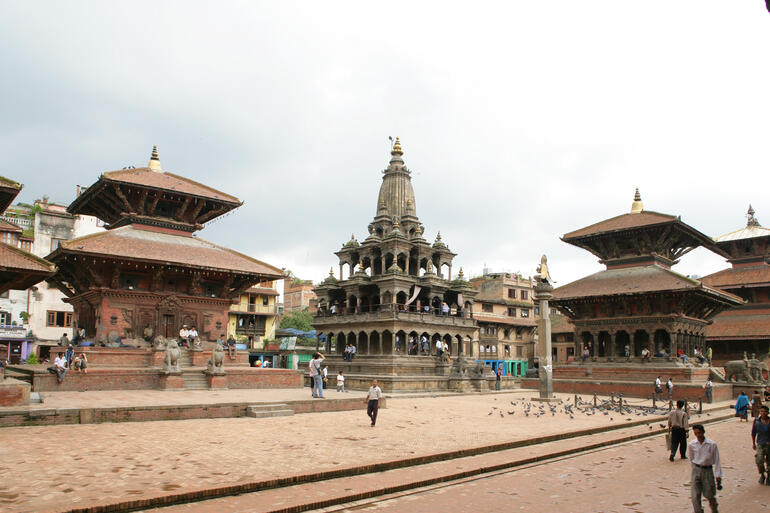
Destruction
On April 25, 2015, a major earthquake struck Nepal, causing thousands of human casualties and widespread destruction of buildings and infrastructure.
The earthquake’s impact on heritage places was extensive throughout the Kathmandu Valley, which is home to hundreds of sacred Buddhist and Hindu sites.
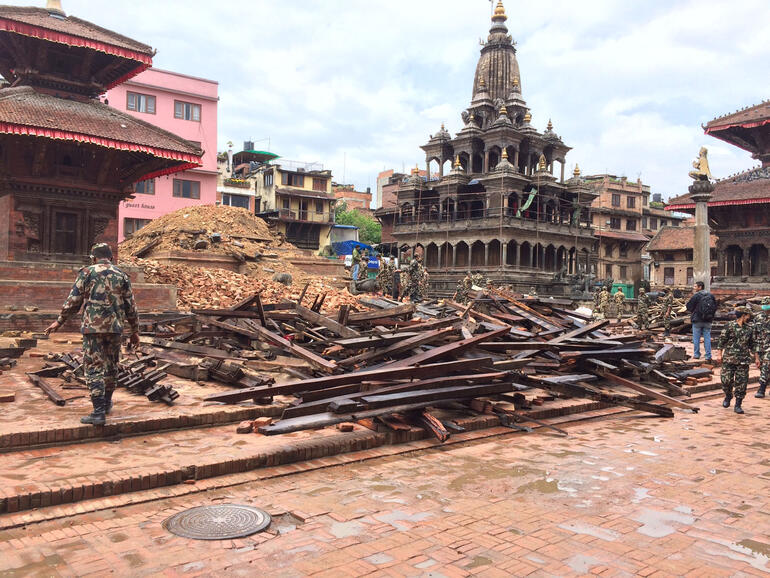
The earthquake caused the complete collapse of Char Narayan Temple, a sixteenth-century temple in Patan. In the aftermath of the collapse, fragments of the temple were rescued through the heroic efforts of community members, police, and Nepal Army.
The salvaged fragments were then painstakingly documented and preserved with the aim of one day reconstructing the temple back to its original form.

Reconstruction
Following the earthquake, World Monuments Fund partnered with the Kathmandu Valley Preservation Trust to reconstruct Char Narayan.
WMF first worked the KVPT in 2006, first to produce a preservation plan for the Patan Royal Palace Complex, which was then carefully restored. After the earthquakes in 2015, it was found to great relief that buildings which had been restored by KVPT using seismic strengthening techniques weathered the earthquakes with little or no damage.
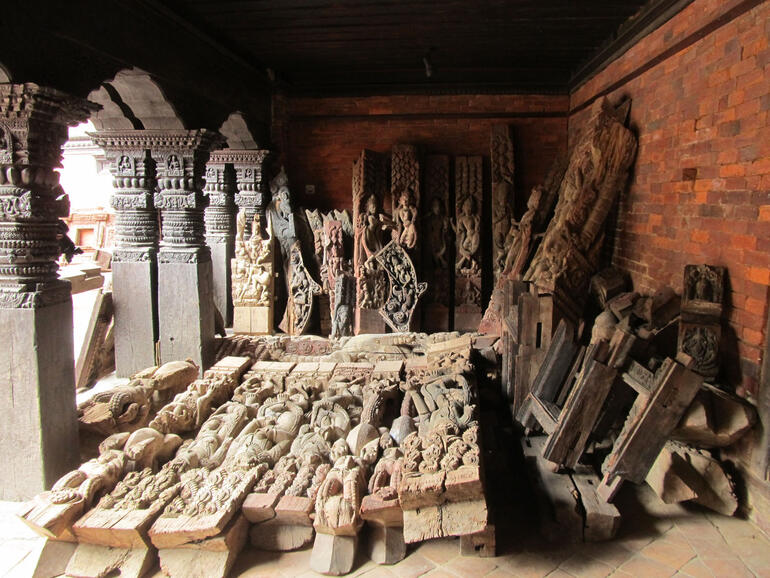

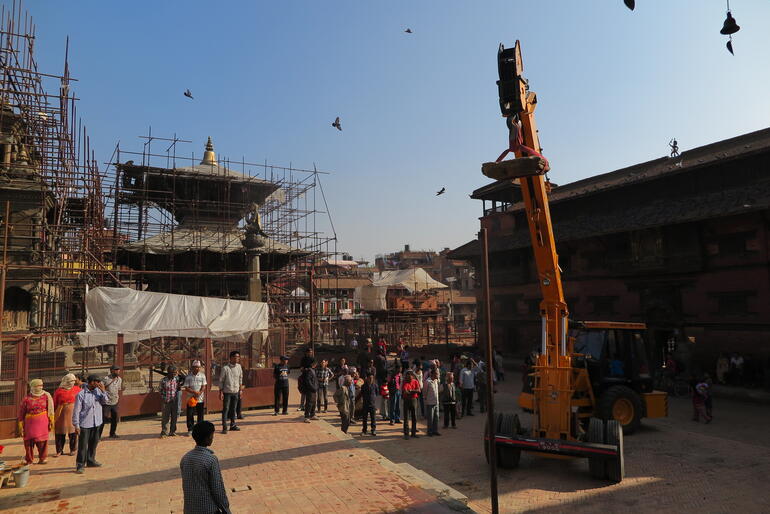
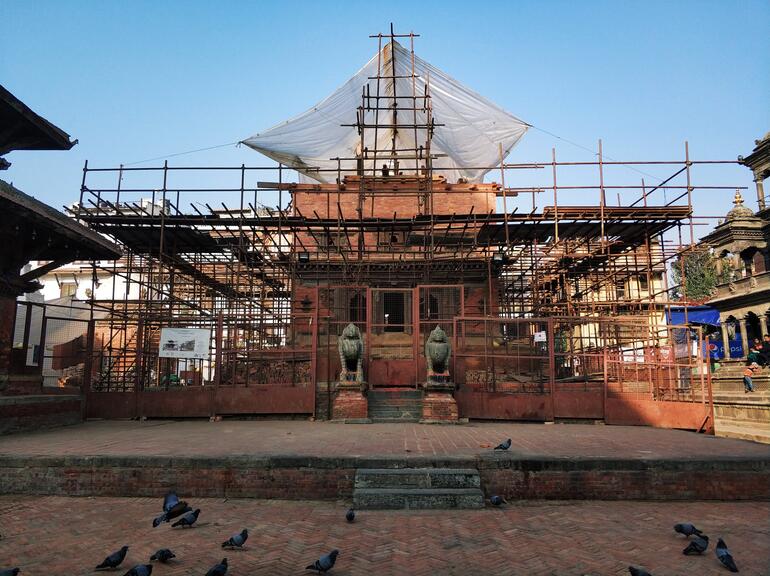
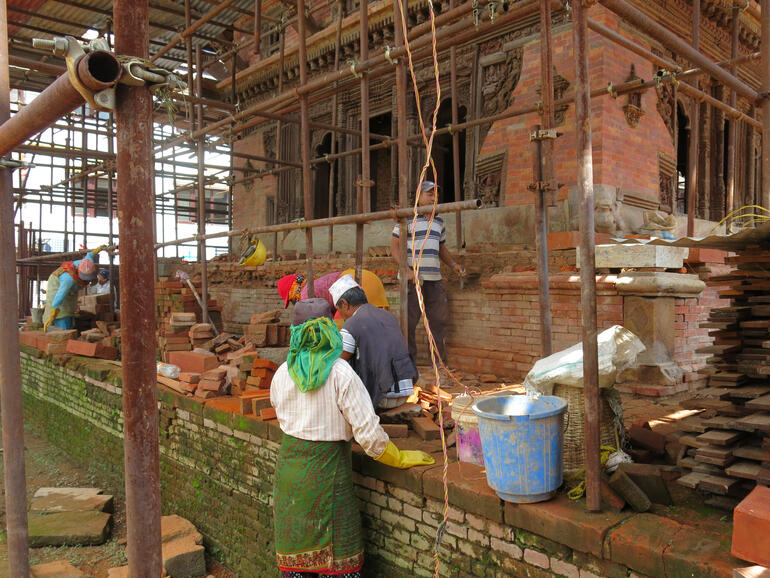
Fusing salvaged materials with modern carvings, the sacred site was accurately reconstructed while concealing carefully designed seismic reinforcement measures. The seismic reinforcement measures ranged from enhanced timber joints and steel reinforcement through brick masonry layers, to concealed beams that tie the structure together.
Char Narayan Temple, like other temples in the royal Patan Square, was still in use during the reconstruction process and thus considered “living heritage.” As a result, the restoration team was particularly sensitive to safety issues while the community continued to worship and spend time in and around the temple.
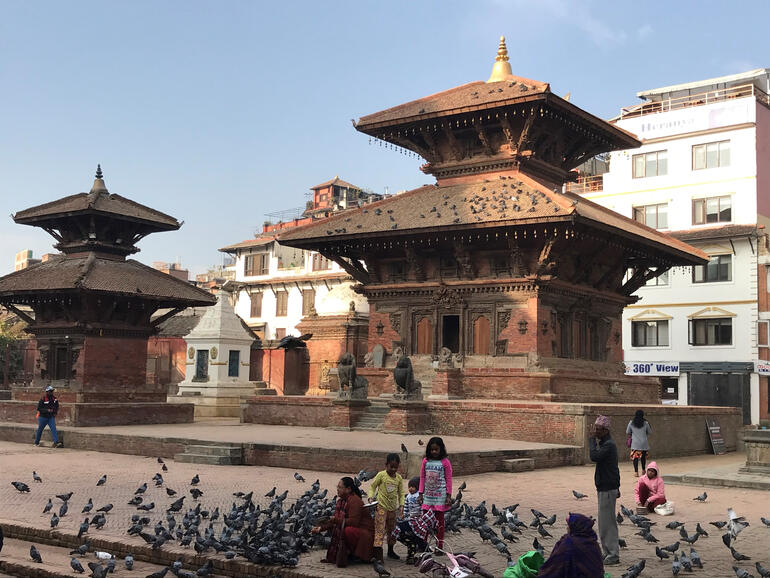
A Place of Healing
In January 2020, a consecration ceremony was held to mark the completion of the reconstruction of Char Narayan. The reconstructed temple notably preserved all historical building materials, and took over 35 months by more than 100 Nepali craftsmen, workers, and professionals.
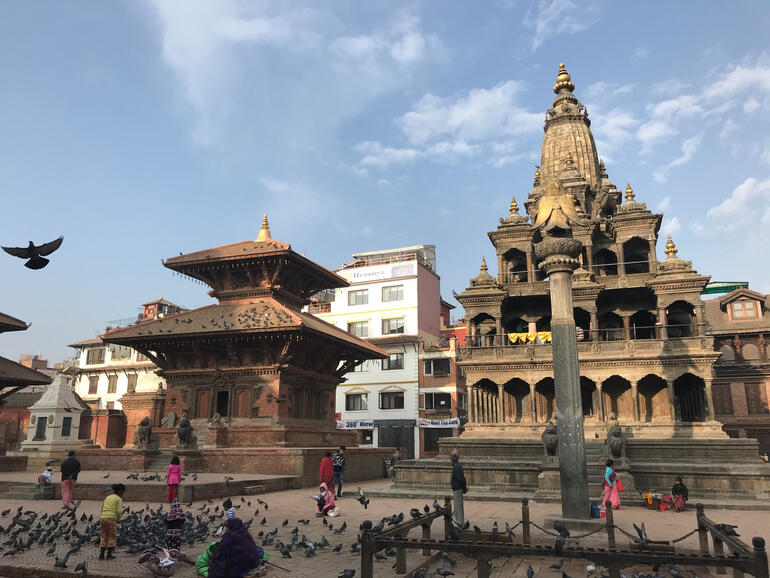
Thanks to American Express and generous supporters like you, World Monuments Fund has helped communities recover in places like Patan over five decades, from the 1966 Venice floods to Babylon, Iraq today. While humanitarian needs come first, restored cultural heritage is a powerful force that galvanizes communities during the years it takes to rebuild.
We continue to provide critical stability for heritage—as soon as disaster strikes thanks to our Crisis Response Fund.
